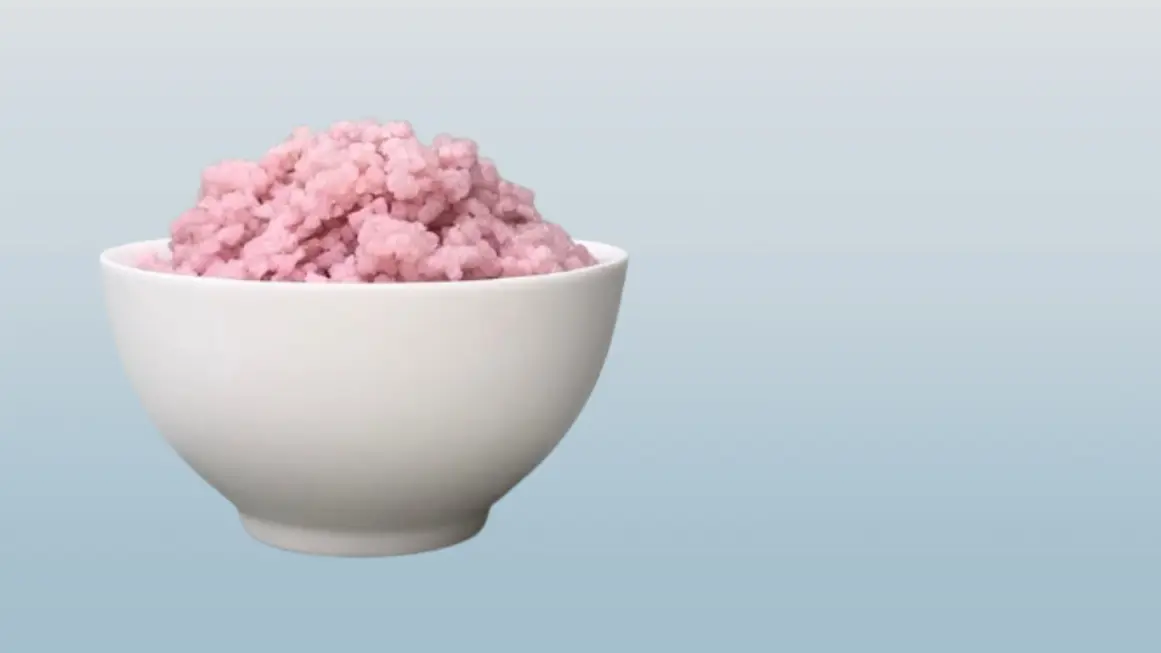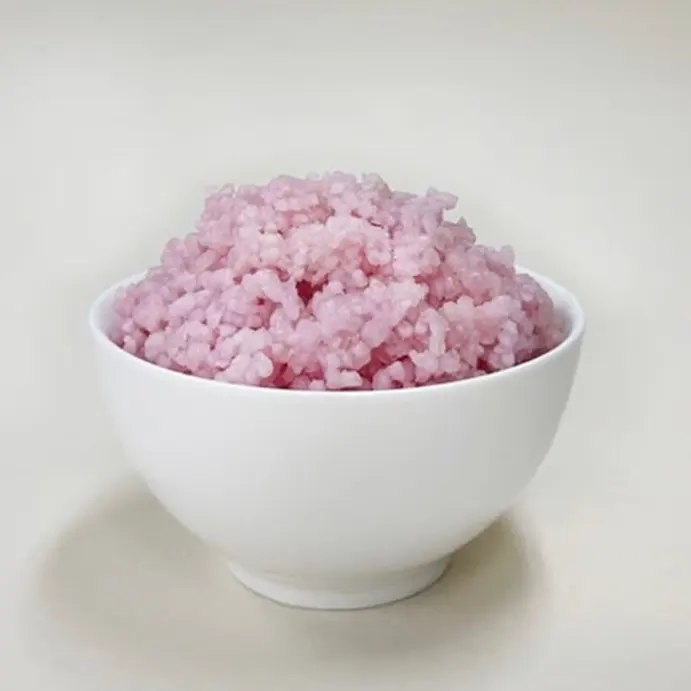According to a report in the journal Matter, hybrid rice is slightly harder and more brittle than normal rice, but it contains more protein. According to a research team at South Korea’s Yonsei University, it has 8 percent more protein and 7 percent more fat. Compared to regular beef, this lab-grown meaty rice has lower carbon emissions.
Scientists have invented a new type of hybrid food called meaty rice or meaty rice. They claim that this lab-made rice is environmentally friendly and a cost-effective source of protein.
Basically, this rice is made by mixing rice grains with beef and its fat cells.
To prepare this rice, fish gelatin is first coated on the rice so that the meat cells are easily coated with the rice grains. The seeds are then processed in culture trays in the lab for 11 days.
The researchers say this hybrid rice could be used in a variety of ways in the future, including famine relief, military rations and space food, and could play an important role in preventing global food shortages.
But whether consumers will accept it when it comes to the market is the main concern now.
According to a report in the journal Matter, hybrid rice is slightly harder and more brittle than normal rice, but it contains more protein.
According to a research team at South Korea’s Yonsei University, it has 8 percent more protein and 7 percent more fat.
Compared to regular beef, this lab-grown meaty rice has lower carbon emissions. For every 100 grams of protein, hybrid rice emits a maximum of 6.27 kg (13.8 lb) of carbon dioxide, and for the same amount of protein, carbon emissions from normal beef are eight times higher at about 50 kg.
Researcher Sohyeon Park explained, ‘We usually get the protein we need from cattle, but this requires a lot of feed and water on the farm, which increases greenhouse gas emissions.
Now if the protein equal to meat can be obtained from this hybrid rice produced in the lab, imagine what it would be like?’
Rice acts as a medium for the proper growth of meat cells and it also provides nutrients to the meat cells.
Park said, rice has nutrients, but if meat nutrients are added to it, the overall nutritional value will increase.
He said, ‘I didn’t think the rice could be made so well. I now see great potential in the world for this grain-based hybrid food.’
People need to understand
Many groups are already trying to produce meat products in the laboratory. Since the first lab-grown burger was unveiled in London in 2013, dozens of companies around the world have joined the race to bring affordable artificial meat to market.
Singapore recently began selling the world’s first lab-grown chicken products to consumers.
Meanwhile, Italy has passed a bill to ban all forms of lab-grown meat to protect their country’s food heritage.
Critics, however, say that lab-grown meat contains nothing synthetic but is made from natural cell growth.
Professor Neil Ward, an agri-food and climate expert at the University of East Anglia, said such research would play a role in developing healthier and more climate-friendly foods in the future. But people need to understand that.
“Lab-produced meat will gradually replace processed meat on the market,” he said.
Bridget Benlam of the British Nutrition Foundation said: ‘Creating food that is both good for the planet and good for people is a big challenge. This research demonstrates a new approach that may contribute to its solution going forward.’
He further said, ‘Research results show that rice has a slight increase in protein, so it cannot be called a high protein food right now. More work is needed to use this technology as an alternative protein source to conventional animal products.’



